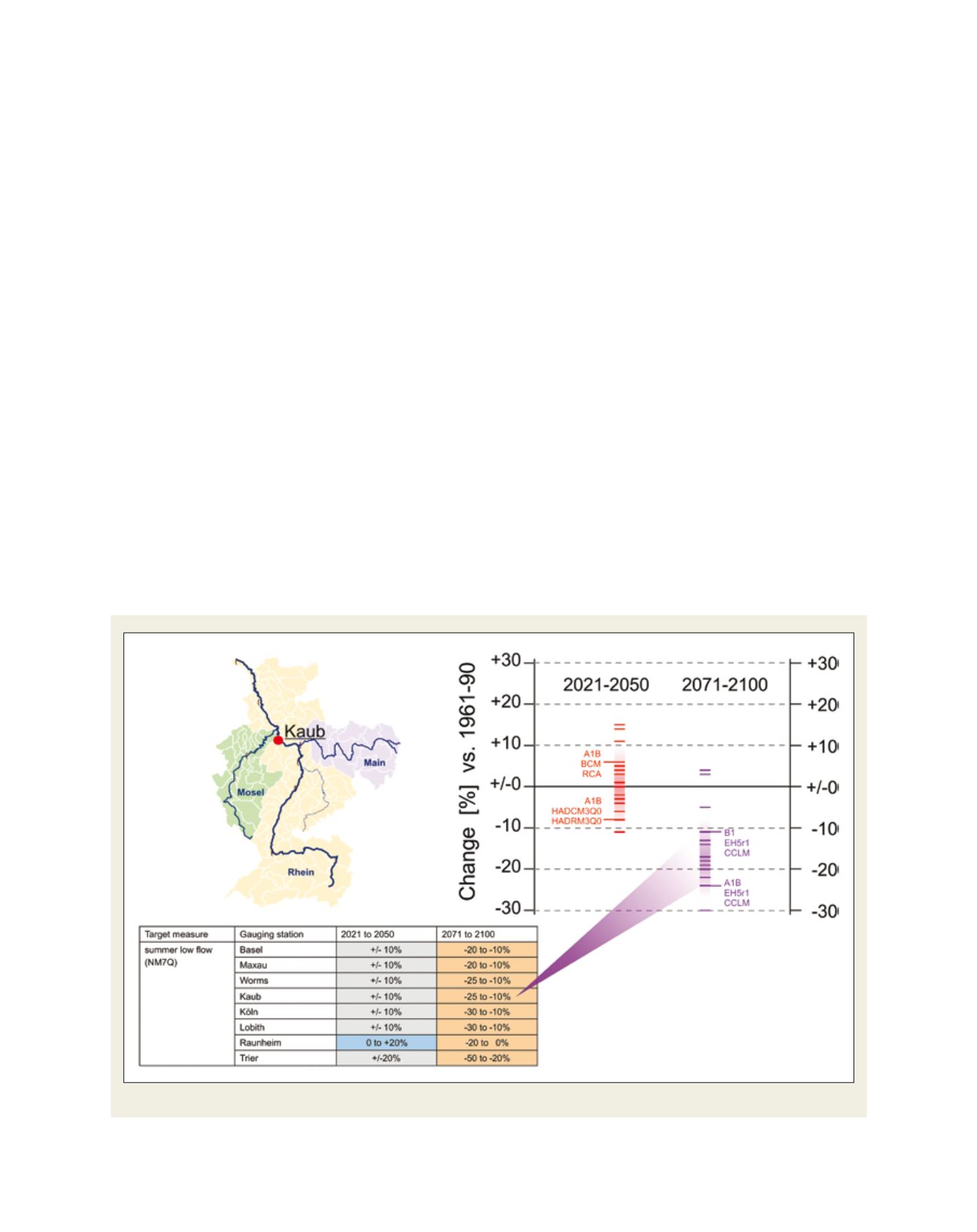

[
] 91
W
ater
forward-looking, sustainable water management adjustment strate-
gies to floods, ecology and water quality.
The data and the documentation on the ICPR scenarios are now
accessible online in four languages (English, French, Dutch, and
German) via the ICPR website.
5
This information finds vivid and
growing acceptance. For example, the inland navigation sector as
organized in the Central Commission for the Navigation of the Rhine
took the same data as basis for an assessment for adaptation needs.
6
Example service: WAVOS daily low-flow forecast
Within the integrated modelling system of the institutes forming
the KLIWAS consortium, not only centennial projections but also
daily forecasts are offered. These forecasts are implemented as an
operational online service, named WAVOS.
Currently, the service covers lead times up to four days for
selected gauges along several major rivers in Central Europe
(Rhine, Elbe, Upper Danube, Oder). One purpose of the daily
forecasts is to support the transport and logistics sector along the
rivers when vessel operations may be restricted due to extreme
flow conditions. Other users also benefit from this service, for
example, the flood-warning centres of the German federal states.
The service is based on a similar model chain like the discharge
scenario service – starting from meteorological model outputs, that
are optimized to be applicable in hydrological and hydrodynamic
models. The forecasting system takes weather forecasts of the DWD
as input. The initialization is based on station data retrieved from
the DWD and the French Meteorological Service (Météo-France).
These data are assimilated into the hydrological and
hydrodynamic components which are run at the BfG.
At the end of the processing chain, stream-flow and
water-level information is offered at relevant gauges
on the waterways. The forecasts are updated daily.
They are accessible free of charge via the Internet and
Videotext. Up to 4,000 clicks per day on the website
indicate the high level of acceptance of the service.
Lessons learned
The processing framework and the scientific network
of KLIWAS give information on climate change and
climate impacts that is quantitative, tailored to relevant
environmental and economic sectors, including uncer-
tainty guidance that has proven to be comprehensible
for stakeholders and is widely accepted in science and
administration due to early coordination with scientific
institutions working in the same area and field. This
information, however, is dependent on the current
capability of complex model chains to resemble real
world phenomena, and on the availability and quality
of observed data of all components of the water balance.
KLIWAS continues to work at the improvement
of data and models and the dissemination of results.
Currently, integration of many data and models is
regarded as best choice to obtain relevant information
on climate change and climate impacts.
Scenario corridors for an exemplary indicator (low flow during summer) characterizing hydrological change in the Middle Rhine River
Source: BfG
















